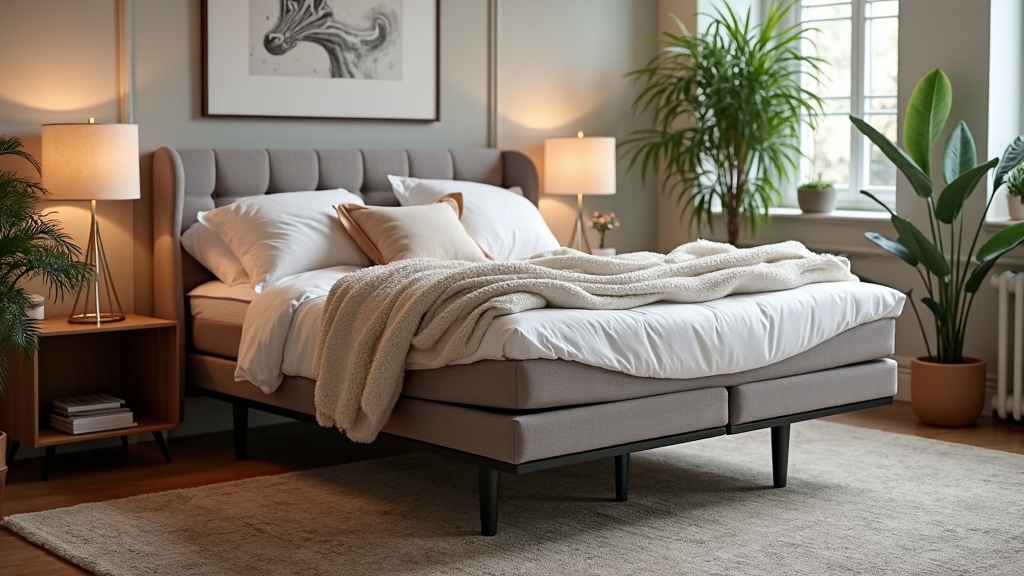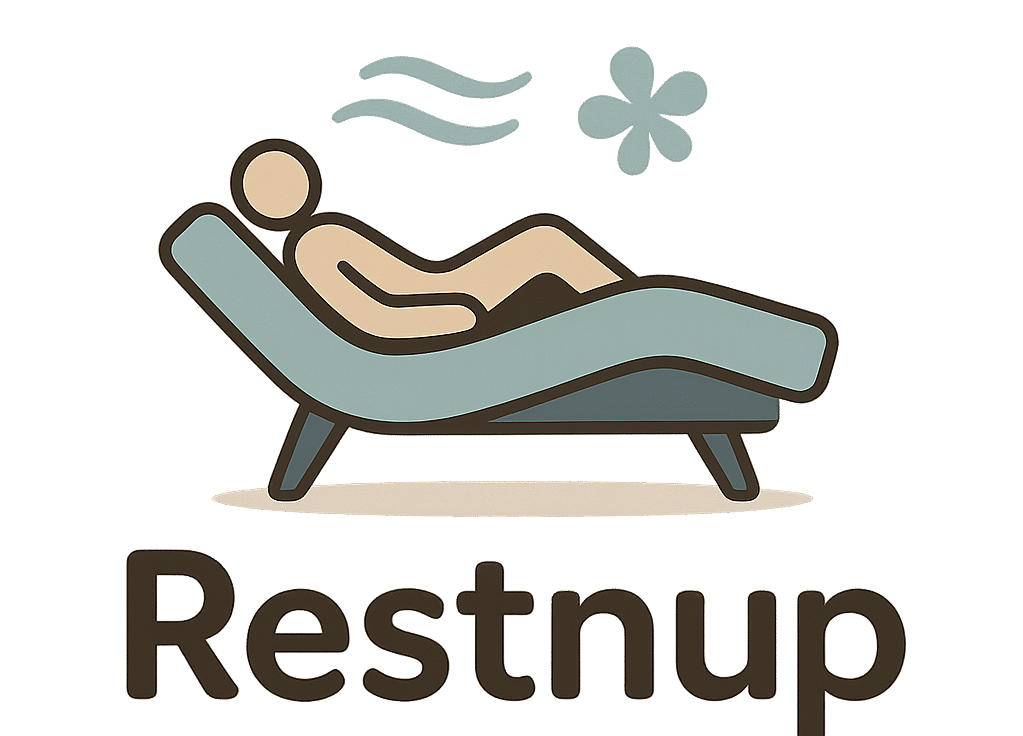If you’ve been struggling with lower back pain and tossing and turning every night, adjustable beds might be a pretty solid option to check out. I’ve dealt with my fair share of back pain and know that a better night’s sleep can make a huge difference in how you feel all day. Let’s take a closer look at how adjustable beds work, why people with back pain swear by them, and what you might want to consider if you’re thinking about making the switch.

Why Adjustable Beds Matter for Lower Back Pain
Dealing with chronic lower back pain is no joke, and it’s something many people face at some point. According to research from the CDC, about 39% of adults experience back pain. A lot of that starts or gets worse because of poor sleep posture or a mattress that just doesn’t cut it. Adjustable beds can help because they offer a way to change how your body is positioned, taking pressure off your lower back and promoting a comfier, healthier night’s sleep.
Back in the day, adjustable beds were mostly found in hospitals. Now, there are tons of options for home use, and the technology has gotten a lot more accessible. Features like remote controls, memory settings, and even massage functions are totally common now. These extras can help target discomfort in your lower back and support your body’s natural curves while you sleep. In addition, the rise of adjustable beds in the home market means more people are able to find relief from chronic pain or sleep issues without having to depend on stiff, traditional bed setups.
Understanding How Adjustable Beds Help
An adjustable bed frame lets you raise or lower different parts of the bed, like the head or foot sections. This means you can find just the right angle for your lower back, hips, and legs, instead of being stuck in a totally flat position. Here’s how that makes a difference for your lower back:
- Reduces Pressure on the Lumbar Spine: Lifting your legs slightly can take tension off your lower back. This is helpful if your pain worsens when you’re lying totally flat.
- Promotes Natural Alignment: Raising the upper body helps keep the spine in a better position, which means less muscle strain and fewer twists that lead to morning aches.
- Improves Circulation: Adjusting your legs above heart level can help reduce swelling, especially handy if you’re sitting or standing all day, and takes a load off your lower back muscles.
People with herniated discs, sciatica, or arthritis often find adjustable beds extra useful for those reasons. After trying out an adjustable bed when recovering from a minor back injury, I found that even small changes in sleep angle can make the next day far less painful. Adjustable beds especially help those who find that no matter how much they fluff their pillows, standard beds just don’t address the specific support needs that bodies have at night.
Some models even allow split adjustments, so if you share a bed with a partner, you both get your own comfort zones. This design can really step up the quality of rest for both people, especially if you have different preferences or health needs.
Sleep Quality: Why Adjustment Makes a Difference
Lower back pain doesn’t just bug you during the day; it often messes with your sleep. Tossing around trying to get comfortable, waking up numb, or feeling sore in the morning are all signs your bed isn’t doing much for you. By being able to change up the angle, adjustable beds can help your muscles relax and make it easier to drift off and actually stay asleep.
Lots of people with back issues struggle to get through the full sleep cycle because pain wakes them up. Research in the Journal of Orthopaedic Surgery and Research notes that sleeping in a zerogravity position—which means your legs and chest are both slightly elevated—can seriously cut down on discomfort and improve sleep quality for back pain sufferers. Adjusting your mattress helps your body settle into a position where weight is evenly distributed. That means less pain and longer, deeper sleep. Sleeping in a position that eases stress on common pressure points reduces tossing and turning at night, leading to more uninterrupted sleep and a better mood throughout the day.
It’s not just about pain relief, either. Adjustable beds support healthy breathing by opening up airways and reducing snoring, which is a benefit plenty of couples appreciate. Those little tweaks in position can help with acid reflux, heartburn, and even increase comfort for people dealing with allergies or congestion.
What Features to Look For in an Adjustable Bed
Not all adjustable beds are created equal. Some are packed with cool extras, while others keep things basic. Here are a few features I always recommend paying attention to if you want relief from back pain and better sleep:
- Range of Motion: Check if you can adjust both the head and foot sections. Some beds offer more lift, which lets you finetune your comfort level.
- Preset Positions: Presets like “Zero Gravity” are super helpful and save time fiddling with the controls every night.
- Remote Control: Wireless remotes with backlit buttons are the way to go, especially if you change positions often at night.
- Mattress Compatibility: Make sure your existing mattress works with the frame, or consider a mattress made specifically for adjustable beds for even more support.
- Massage and Vibration: Some models offer massage modes that can ease tight muscles before bed, which I personally find pretty relaxing.
Extra perks like USB charging ports, underbed lighting, and split designs for sharing the bed with a partner don’t hurt either. It’s smart to consider if you want tech-friendly additions, especially if you like having your phone or tablet close by. Some beds even feature app-based controls, so you can adjust your position right from your device.
Key Things to Consider Before Buying
Choosing an adjustable bed is a pretty big investment, and what works for one person might not work for you. Here are a few things worth thinking about if lower back pain or poor sleep is a problem:
- Your Sleeping Style: Side, back, and stomach sleepers get relief from different positions. Adjustable beds usually help side and back sleepers the most.
- Medical Advice: If you have a health condition like a herniated disc or severe arthritis, talk it over with your doctor or physical therapist before making a purchase.
- Space and Setup: These beds are heavier and need more room than a regular frame. Make sure they’ll fit in your space and be easy to assemble.
- Warranty and Support: Since there are electric motors and moving parts, it’s smart to check the warranty and what kind of customer support is included.
I found that testing out an adjustable bed in store (if you can) helps a ton with finding the right angle and comfort for you, rather than relying on online guesswork. Take your time to explore how different settings feel and don’t rush your decision.
Beds and Mattresses: What’s the Best Pairing?
Not all mattresses work perfectly with adjustable bases. Memory foam, latex, and hybrid mattresses usually bend with the frame and don’t lose support. Traditional innerspring mattresses or extra thick pillow tops can sometimes get bunched up or even damaged when adjusting the angles.
If you already have a favorite mattress, check with the manufacturer if it’s compatible with an adjustable frame. If not, you may want to look for one marked as “adjustable base friendly” for the best combo of comfort and support. Keep in mind that a mattress suited for adjustable beds often lasts longer and responds better to regular angle adjustments, ultimately giving a boost to your investment.
When choosing a mattress, consider your specific needs like pressure relief, cooling features, or firmness. Especially for those with sensitive backs, these factors can make a world of difference in your nightly comfort.
Tips for Getting More Out of Your Adjustable Bed
Once you’ve got your adjustable bed, dialing in the setup is what really helps maximize the payoff for your lower back and overall sleep:
- Find Your Comfort Angle: Start with a slight incline at both the head and feet—small changes make a big difference for lower back release.
- Try Zero Gravity Mode: This position takes pressure off the spine and mimics the relaxed posture astronauts use, so it’s worth testing if you have back pain.
- Switch Up Positions: Your body’s needs change. If your back gets achy in one position after a few nights, try adjusting the incline until you find the sweet spot.
- Keep Consistency: Use the same supportive pillow and regularly clean the mattress for better spine alignment and sleep health.
Many users find that after a few nights of experimenting, getting into a comfortable sleep position comes way faster and they wake up with less stiffness. Simple practices like stretching before bed and staying hydrated can also give a boost to the positive effects of your adjustable bed.
Consider integrating sleep-friendly habits like winding down with a book or using white noise. By combining an adjustable bed with a strong nighttime routine, you can get even more relief from pain and get on track for great sleep.
Frequently Asked Questions
I get questions all the time from friends and readers trying to sort out if adjustable beds really help, or if they’re worth the investment. Here are a couple that come up often:
Question: Can adjustable beds work with any mattress?
Answer: Not all mattresses are made for adjustable bases. Memory foam, latex, and hybrids usually bend well, but traditional innerspring or extra firm models sometimes don’t hold up.
Question: Is a zero gravity position good for my back?
Answer: Zero gravity can really help relieve lower back pressure for a lot of people. Elevating your legs and head slightly often eases muscle tension and can make a real difference in comfort.
Question: Are adjustable beds loud when you move them?
Answer: Most modern adjustable beds are quiet, but you’ll usually hear a low hum as the motors move. It’s not very disruptive unless the room is absolutely silent.
Are Adjustable Beds Really Worth It?
If lower back pain or poor sleep keeps you up at night, adjustable beds offer a really practical way to customize your sleep setup. By letting you find the right angles for your back and hips, these beds can help your body relax better and give you a comfier, more restful night. I’ve also noticed that feeling well rested makes it easier to manage pain and take on the day.
While not everyone needs an adjustable bed, the relief and flexibility they provide can totally change the game if you’re serious about comfort and sleep quality. Trying one out, even just for a rest in a showroom, might help you figure out if it’s the upgrade you’ve been looking for. Sweet dreams and fewer back aches are always worth aiming for! To sum it up, adjustable beds give you more control and could be the missing piece in your search for quality sleep and pain relief. If you’re ready to make your nights (and your mornings) a little easier on your back, it’s worth giving them a test run.
